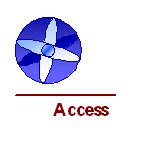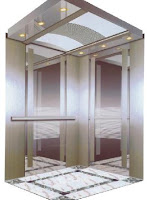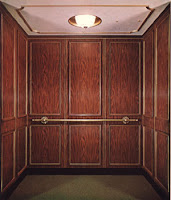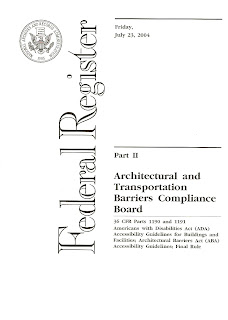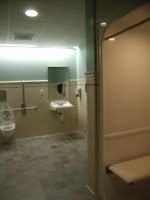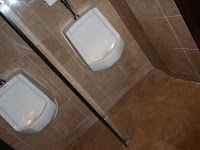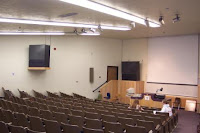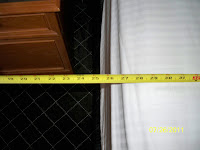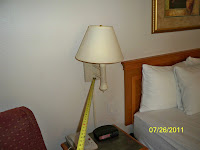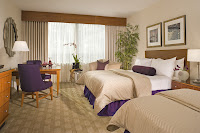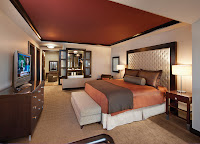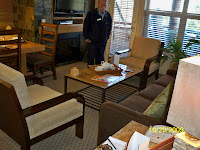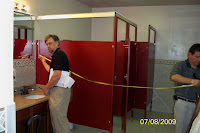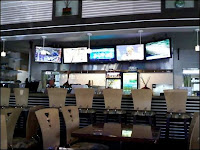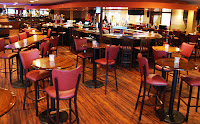There are hotel rooms with mobility features (these are the typical wheelchair accessible rooms), and then there are the standard guest rooms, some of which are required to have communication features (hearing impaired). The inside of the standard hotel room is private space and is not subject to PL101-336 The Americans with Disabilities Act of 1990 (ADA) and the ADA Amendments Act of 2008, with an effective date of January 1, 2009, Title III Nondiscrimination on the basis of disability by public accommodations in commercial facilities.
In the opinion of ACCESS, the entrance door exterior is public space; the entrance door interior is private space with no accessibility requirements unless the space is designated to have mobility features or is a space used for hospitality to entertain the general public.
We are seeing the standard hotel room entrance door that swings into the hotel room with an 18 inch doorway maneuvering clearance on the pull side parallel to the door; this is inside the unit. Being private space, there is no accessibility requirement for the inside of the entrance door. This 18 inches has added a minimum of 30 square feet to the room size.
My feeling is that the hospitality industry and the guest have gotten so accustomed to the additional room size that we may not see any change. The bottom line is that 18 inches maneuvering clearance on the pull side is not required in standard rooms in the opinion of ACCESS. The challenge may be to get building officials who enforce the International Building Code (IBC) and the ICC/ANSI A117.1 to understand the Architectural and Transportation Barriers Compliance Board (Access Board) guidelines.
Questions? Leave your comments here or post on our FaceBook page at http://www.facebook.com/pages/Access-Technologies-Services-Inc/268659564730#!/. You can also contact us at hfalstad@accessts.net or call us at (702) 649-7575.
Hank
